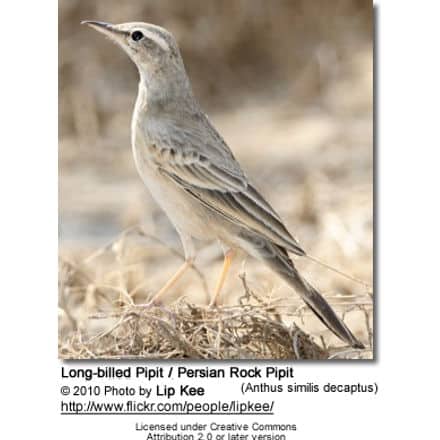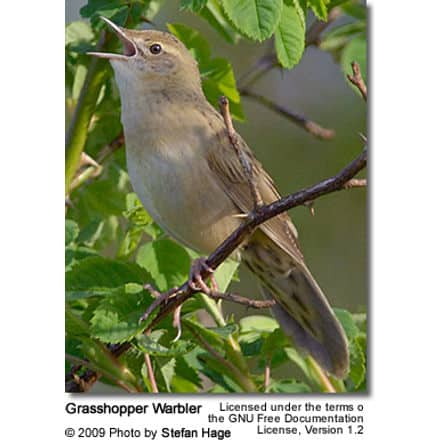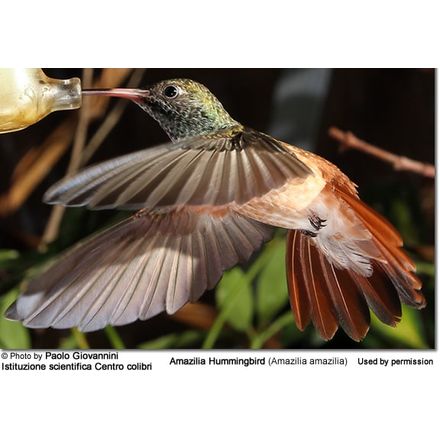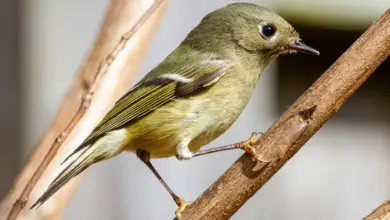Long-billed Pipits or Brown Rock Pipits
Pipit Information … Pipit Index of Species … Pipit Species Photos
The Long-billed Pipits or Brown Rock Pipit (Anthus similis) is a passerine bird that has a wide distribution. Several subspecies have been created for the populations in Africa, through the Arabian peninsula, and South Asia. The systematics of this complex is yet to be clarified. Most birds are residents or short-distance migrants.
Description
This is a medium-large pipit, 16-17.5 cm long, but is an undistinguished-looking species on the ground, mainly sandy grey above and whitish or pale buff below. It is very similar to the Tawny Pipit but is slightly larger, has a longer tail, and a longer dark bill.
The Long-billed Pipits flight is strong and direct.
Calls / Vocalizations
It gives a characteristic chupp call, similar to Desert Lark. Its song is like that of the Tawny Pipit, but slower and more varied, sri…churr…sri…churr…sri..churr. Like its relatives, the Long-billed Pipit eats seeds and insects.
Breeding / Nesting
The Long-billed Pipits breeding habitat is dry open slopes with rocks and low vegetation. The nest is on the ground, with 2-4 eggs being laid.
Taxonomy and evolution
This is a complex group with several similar-looking birds with very disjunct distributions and the exact patterns of phylogeny are yet to be determined. Several subspecies that were formerly placed within this species have been raised to full species status.
The Woodland Pipits (Anthus nyassae), an inhabitant of miombo woodland in south-central Africa, was formerly treated as a subspecies of this bird but is now usually regarded as a separate species. Some authorities also split Bannerman’s Pipit (Anthus (similis) bannermani), a bird of mountain grassland in West Africa.
The nominate race was described by Thomas C. Jerdon in 1840 from peninsular India. This form occurs along the Western Ghats and into the Nilgiris and Palni Hills. A darker race travancoriensis was described by Sidney Dillon Ripley in 1953 for the form possibly restricted south of the Palghat Gap. Subspecies decaptus described by Richard Meinertzhagen is found in Afghanistan, Pakistan, and parts of northwestern India, while jerdoni is found along the Himalayan foothills east to Nepal. The population of yamethini is somewhat disjunct and found in Myanmar. Several other races are described in the West Asian region and from Africa.
Copyright: Wikipedia. This article is licensed under the GNU Free Documentation License. It uses material from Wikipedia.org … Additional information and photos added by Avianweb.
Please Note: The articles or images on this page are the sole property of the authors or photographers. Please contact them directly with respect to any copyright or licensing questions. Thank you.








